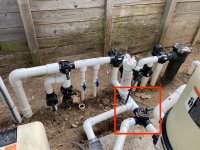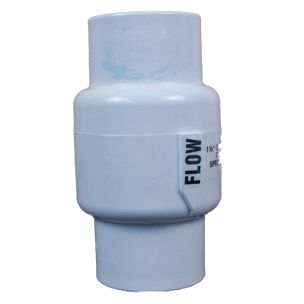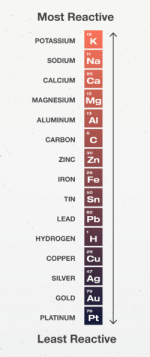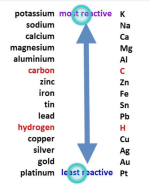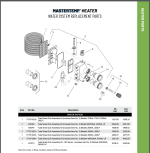I just have a hard time believing that it's a tab feeder issue given 1) how rarely I used tabs, 2) the fact that the system (including the check valve) is only 21 months old, and 3) that the 3-way valve always routed water through the heater (never bypassed, so in this configuration, there's no way for tabs to flow to the heater).
I would estimate that 90% of the time I used liquid bleach. The 10% of the time was when I was leaving town for more than a week and some rare occasions where I didn't have bleach available. It was very infrequent...I still have some of the second box of tabs left.
Looking back through my logs, the lowest my pH has been is 7.2, and the only reason it was that low was that I was working to decrease TA per the TFP app:
That guidance would seem to void the Pentair warranty since the minimum is 7.2 per the manual.
I get that all signs point to a chemistry issue, but I don't see how this recipe adds up to a heater failure in 21 months.
For example, I installed a heater for another company in December of 2021. It was a Max-E-Therm, same heater as yours in a different housing. Pool had the same inline tablet feeder as yours. I refuse to install the heater without removing that and the homeowner gave permission.
Six or seven months later the other company called and said the heater was leaking. Upon inspection I found three things; first the tab feeder had been reinstalled by the service company. Second the alkalinity was about 50. Third, water was being pumped out of the blower as the heat exchanger was completely destroyed. Pictures of the heat exchanger, like the picture you posted, showed the ends of the tubes almost gone.
No, Pentair would not warranty the heater, as they shouldn't, because of user error.
Have seen the same thing in other heaters, RayPak and Hayward, that I installed and the service company installed one of those terribly-destructive feeders. The RayPak, fortunately, only had an issue in the manifold, but had the temp sensor and the uni-therm governor (same as the thermal regulator in your heater) destroyed in less that two months.
The Hayward had the same issue as yours, a badly damaged heat exchanger in about nine months.
Twenty-one months, sadly, is well within time for that damage to occur. The heat exchanger can be replaced for less than the cost of the entire heater, but it is a very large job. Usually the cost is about 50% of the cost of a new heater for a company to do it.


